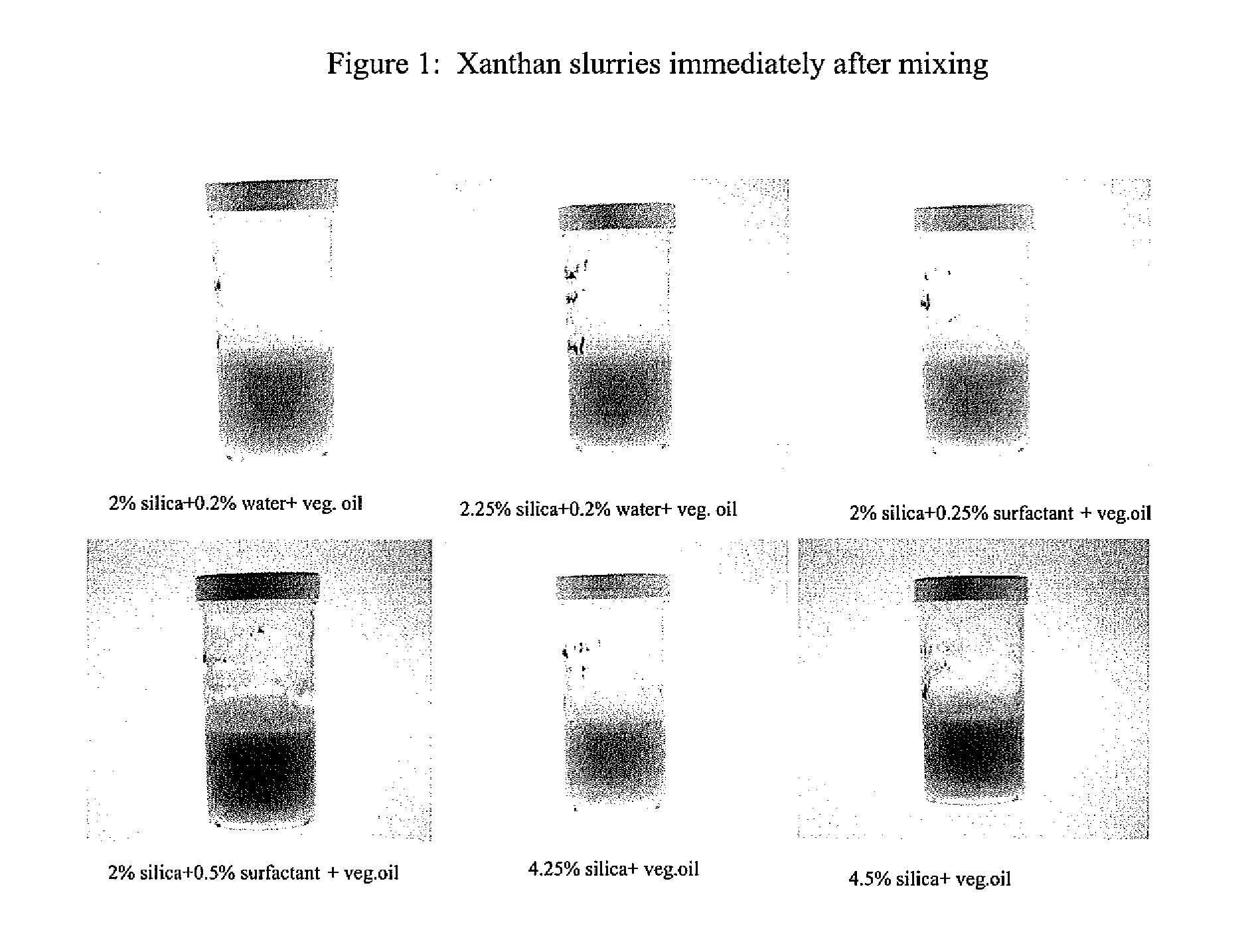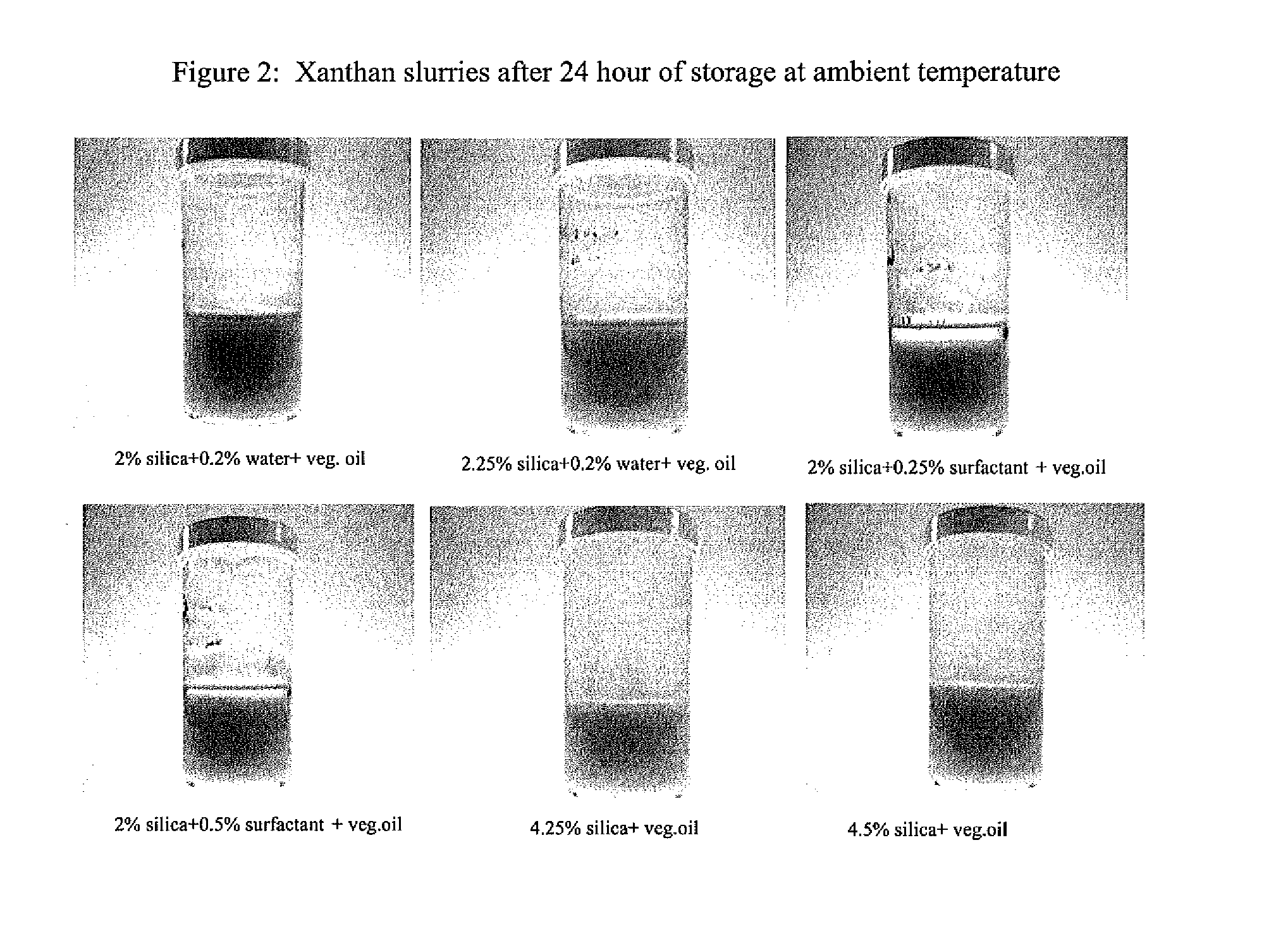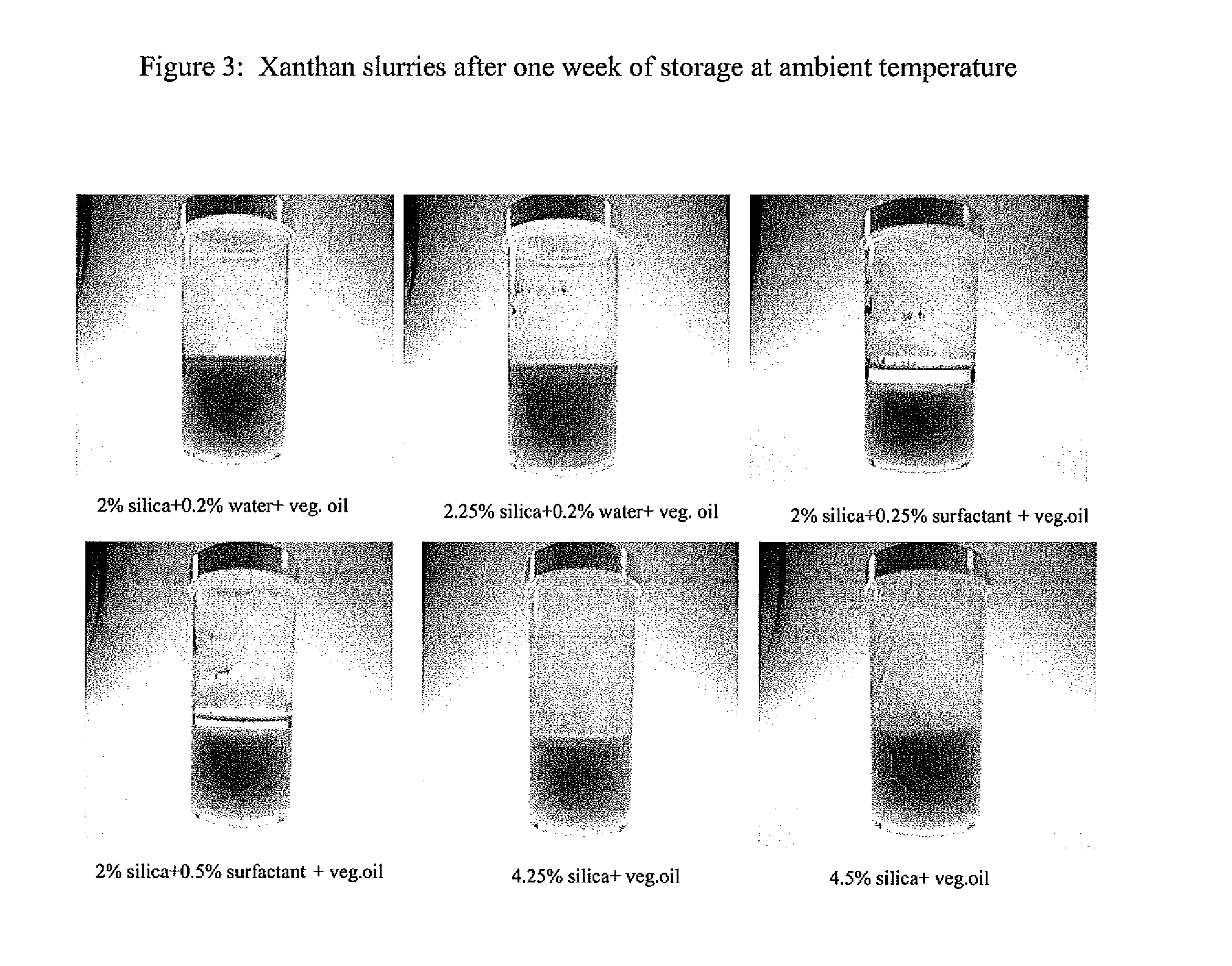Rheologically Modified Edible Oils
- Summary
- Abstract
- Description
- Claims
- Application Information
AI Technical Summary
Benefits of technology
Problems solved by technology
Method used
Image
Examples
example 1
[0039] To 489 g of vegetable oil, 10 g of CAB-O-SIL® M-5 fumed silica is added and dispersed throughout the oil with mixing. 1 g of water is then added. The vegetable oil, fumed silica, and water are then mixed for 5 minutes on a Silverson mixer at 6,000 rpm to thicken the oil. The fumed silica-thickened vegetable oil has sufficient rheology to suspend xanthan gum particles. This suspension readily flows and is easy to mix, pump, and convey. Methods used to measure mixing, pumping, and conveyance of materials are well known to those skilled in the art. The shear viscosity at high shear rates (≧20 sec−1) typically predicts the flow characteristics of the fluid during pumping or mixing. See Table 1.
example 2
[0040] The xanthan slurry is prepared using the above mentioned thickened vegetable oils. The desired amount of the xanthan gum is added to the modified oils to prepare the slurry. The concentration of the gum here is 40%. After the addition of the gum, the slurries are stirred for 20 minutes using a bench top mixer. The nature of the slurry (free flowing or thick paste) depends on the amount of fumed silica or fumed silica+water or fumed silica+surfactant present in the system. The stability of the slurries at ambient temperature is tested by monitoring them at different intervals of time. FIG. 1 shows the slurry just after mixing. From this figure, it can be seen that all the slurries are stable.
example 3
[0041] After 24 hours of storage at ambient temperature, there is top layer separation of the oil in the system containing fumed silica+water and fumed silica+surfactant, which can be seen in FIG. 2. The system containing fumed silica without water and surfactant is quite stable and there is no separation at all. FIG. 3 shows the stability of the above systems after a week of preparation. This figure clearly shows that the slurries prepared with the system containing only fumed silica and vegetable oil are quite stable after a week of storage at ambient temperature. Clear separation of the oil layer at the top can be observed for the systems containing fumed silica+water and fumed silica+surfactant. This is because water and surfactant help fumed silica particles to form aggregates. So at lower concentrations of silica, water or surfactant can bring the silica particles together to form aggregates. The formation of these networks helps to trap the oil, hence modifying the viscosity ...
PUM
 Login to View More
Login to View More Abstract
Description
Claims
Application Information
 Login to View More
Login to View More - R&D
- Intellectual Property
- Life Sciences
- Materials
- Tech Scout
- Unparalleled Data Quality
- Higher Quality Content
- 60% Fewer Hallucinations
Browse by: Latest US Patents, China's latest patents, Technical Efficacy Thesaurus, Application Domain, Technology Topic, Popular Technical Reports.
© 2025 PatSnap. All rights reserved.Legal|Privacy policy|Modern Slavery Act Transparency Statement|Sitemap|About US| Contact US: help@patsnap.com



